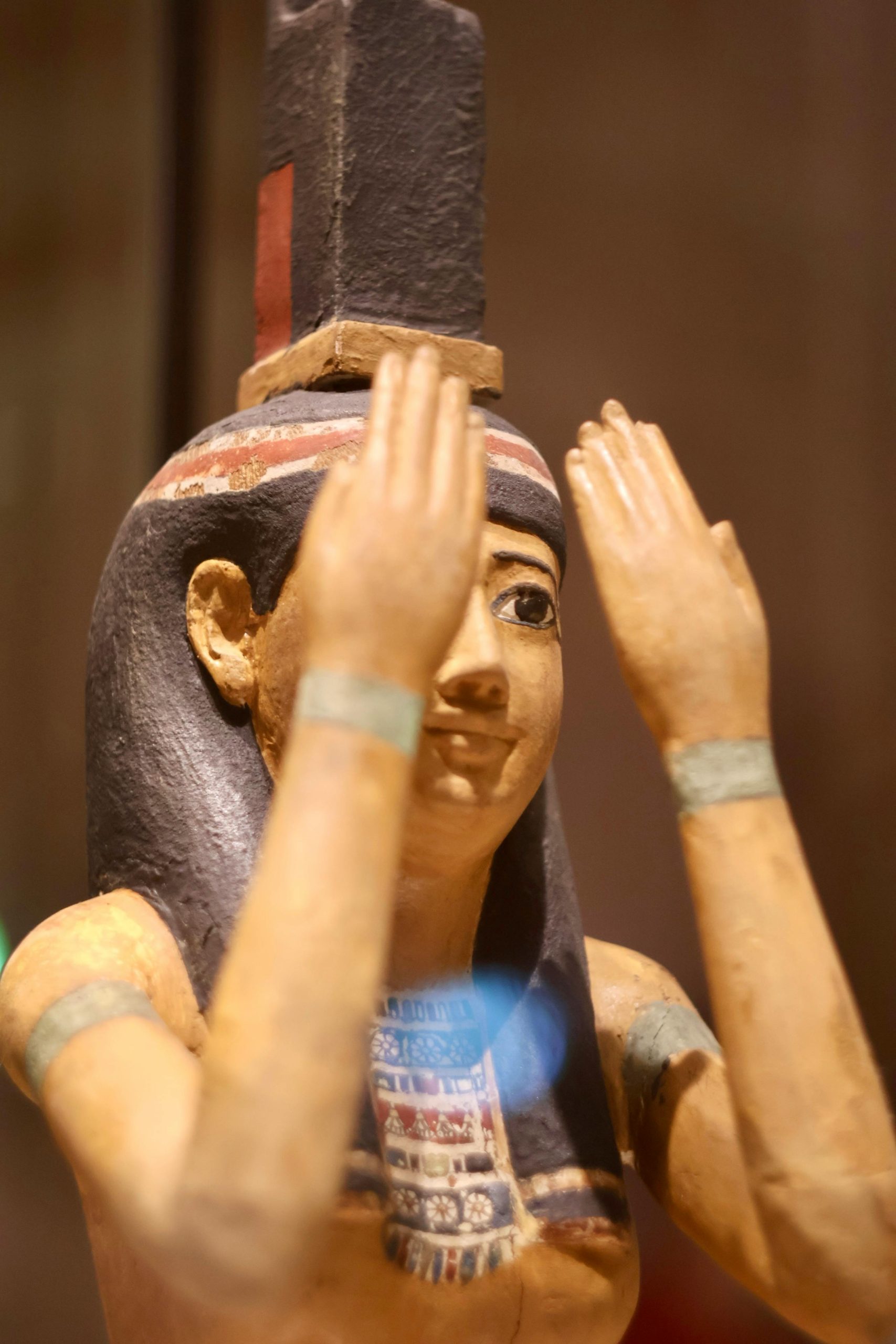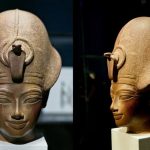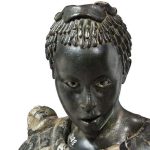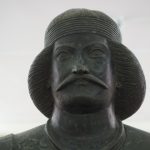Goddess Isis
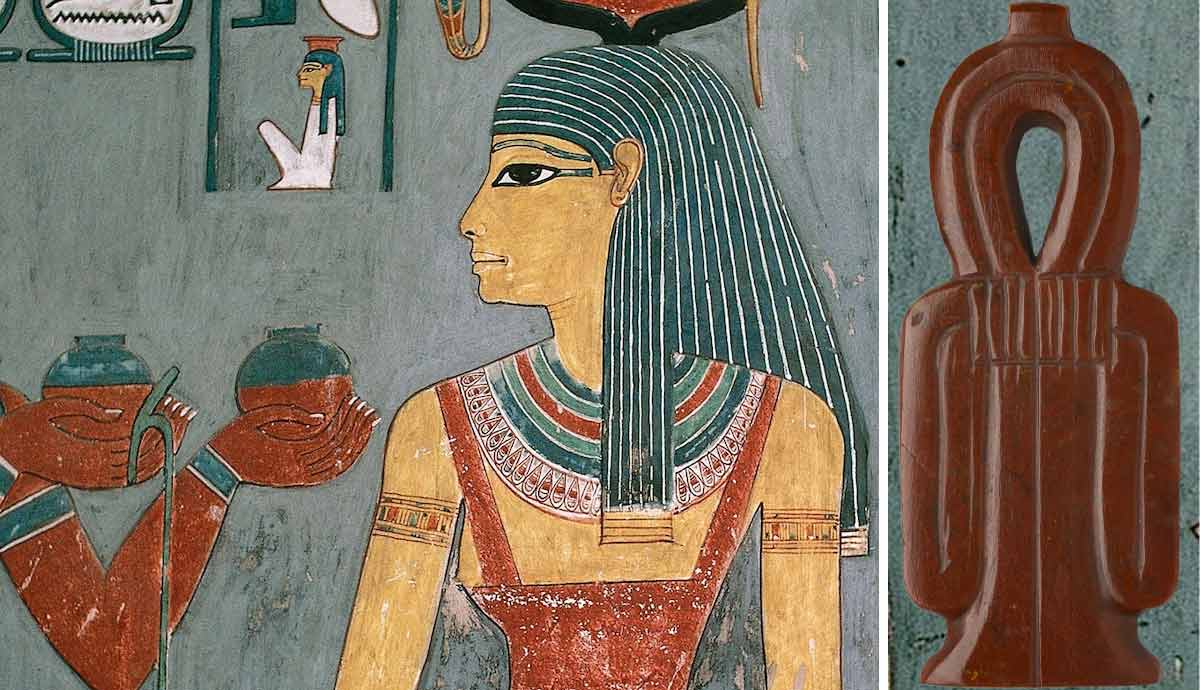
A plastered and painted wooden statue of the goddess Isis , dating to the Ptolemaic Period (332–30 BC). Isis is shown kneeling on a pedestal, wearing a long, form-fitting dress and a tripartite wig topped with the aset-seat—the hieroglyphic symbol used to write her name .
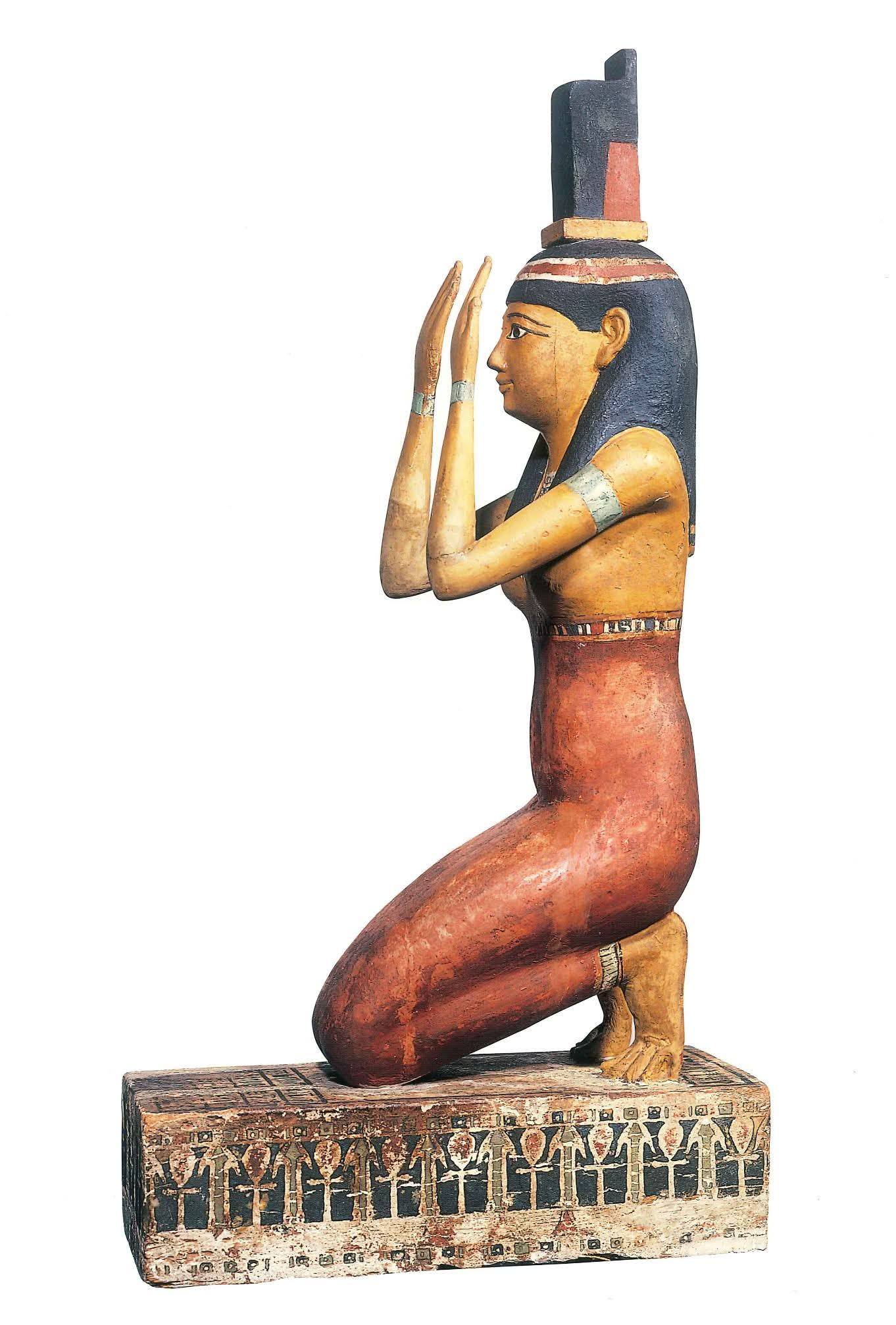
Her hands are raised before her face in a gesture of mourning, possibly scattering dust over her head. The pedestal features a decorative frieze adorned with hieroglyphic symbols of life (☥ ankh) and dominion ( was-scepter), reflecting her divine power and authority.
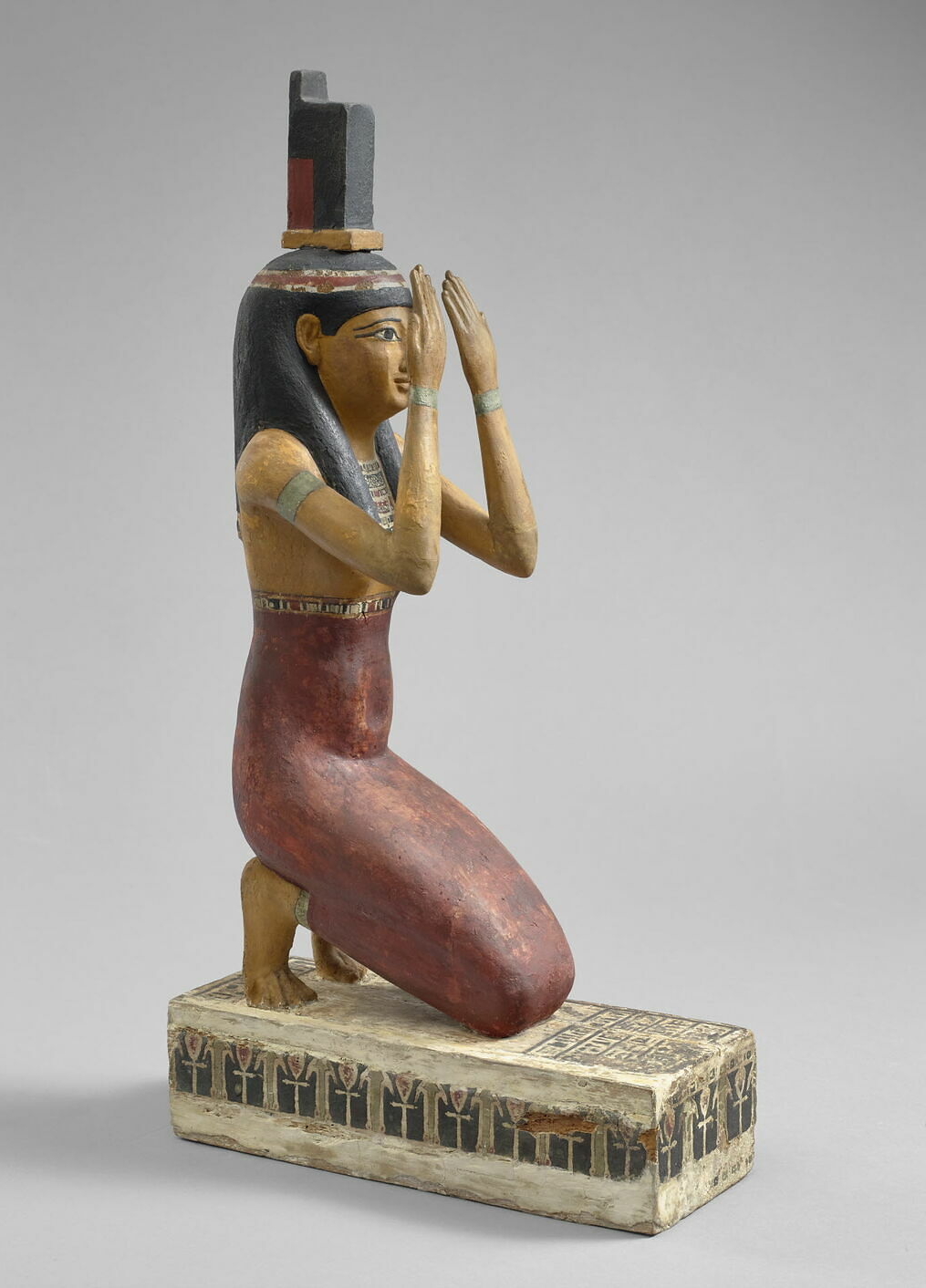
Isis was one of the most important goddesses in ancient Egyptian religion, revered as the ideal mother, wife, and protector of the pharaohs. She was the sister and wife of Osiris and the mother of Horus, forming part of the powerful divine triad. Known for her magical powers, Isis was believed to have restored Osiris to life after his death and to have shielded her son Horus from harm.
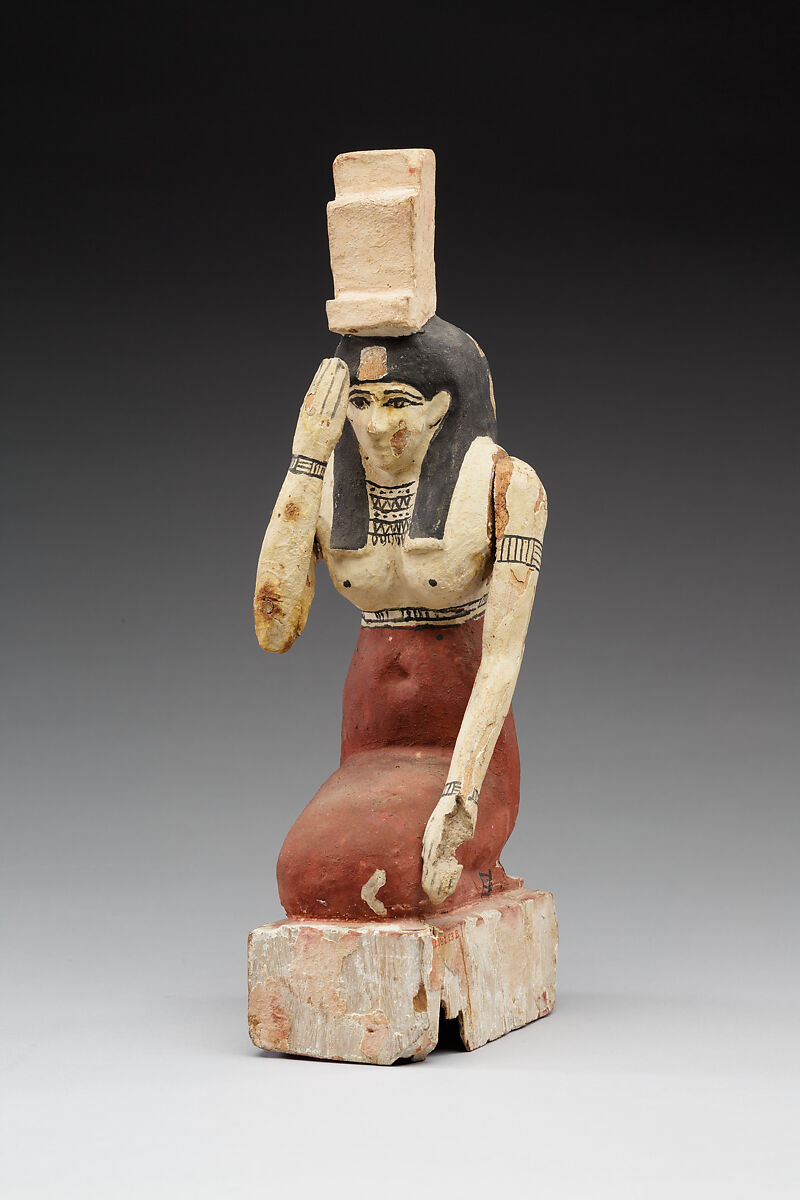
Worship of Isis spread far beyond Egypt, reaching throughout the Mediterranean world during the Greco-Roman period. Her symbols — the throne-shaped headdress, the ankh, and the sistrum — represent life, healing, and divine authority.
